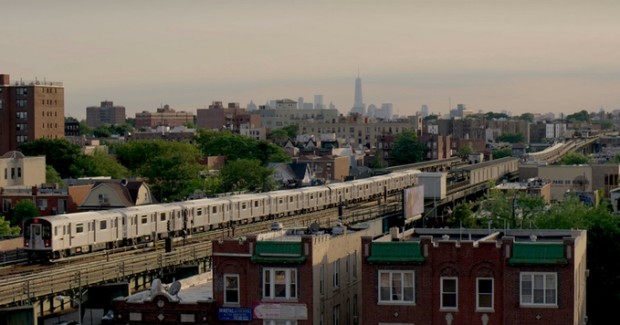In Jackson Heights / Frederick Wiseman / 2015 / 
Active Ingredients: Structure; Montages; Observational acuteness
Side Effects: Less compelling aesthetically than other Wiseman films

[In Jackson Heights plays at Boston’s MFA from Nov. 18 to Nov. 29.]
Early in Frederick Wiseman’s latest in-depth slice of cinéma vérité, a politician and community organizer praises Jackson Heights, Queens, as “the most diverse community on Earth—literally.” With some 160 languages spoken within a 300 acre plot of city blocks, the neighborhood may indeed be a unique melting pot, the kind of American community exalted by our nation’s ideals but rarely realized. And, as Wiseman shows with characteristic focus and investigative savvy, this diverse and authentic community may be the latest victim of the ever-encroaching pall of gentrification.
In Jackson Heights is stylistically akin to Wiseman’s last two great films, At Berkeley and National Gallery. With each project, the director takes a physical location and crafts an elegant observational portrait, documenting events and figures both important and peripheral and weaving together a mammoth, yet somehow unassuming synecdoche of the space. Whether about a university, an art museum or an urban space, Wiseman’s films capture something of the spirit of a location, revealing its inner workings by observing its outward appearance.
And yet, also like his last two films, In Jackson Heights isn’t only about a location. In each of these projects, slowly, over the course of a potentially-daunting running time (here just over three hours), themes and patterns begin to emerge. From moment to moment, Wiseman’s hand as a filmmaker may seem invisible—he captures people and places simply, without adornment or comment—however his films are never purely objective documents. Instead they eschew this foolish and impossible ideal and create carefully composed and subtly pointed statements on the issues that surround the central location. If the images Wiseman grabs from reality are words, his films arrange them into cogent sentences of syntactical and rhetorical rigor.
With In Jackson Heights, Wiseman’s themes are diversity and gentrification, yes, but also the democratic act of organization and the political power of unity. The word “unity” is intoned often, spoken by activists and community organizers, at gatherings and meetings of many kinds. Support groups for LGBT issues discuss uniting to create a sense of belonging; Latino immigrants discuss uniting to fight for workers’ rights; small business owners discuss uniting to raise awareness of a political proposal that would threaten their livelihood. The idea of unity often arises in Spanish, via the words unirnos or juntarnos, reflexive verbs that emphasize the group to be created: we must unite ourselves. The meetings Wiseman captures convey a true sense of urgency, a sense that we must unite ourselves, for nobody else will do it for us. This activism and political presence, it seems, is woven into the fabric of the community of Jackson Heights.
These are only a few of the strands that make up the tapestry of In Jackson Heights. At the age of 85, the indefatigable and indispensable Frederick Wiseman is further proving the artistic and moral value of his unique career-long project.



2 comments
Do you want to comment?
Comments RSS and TrackBack URI
Trackbacks